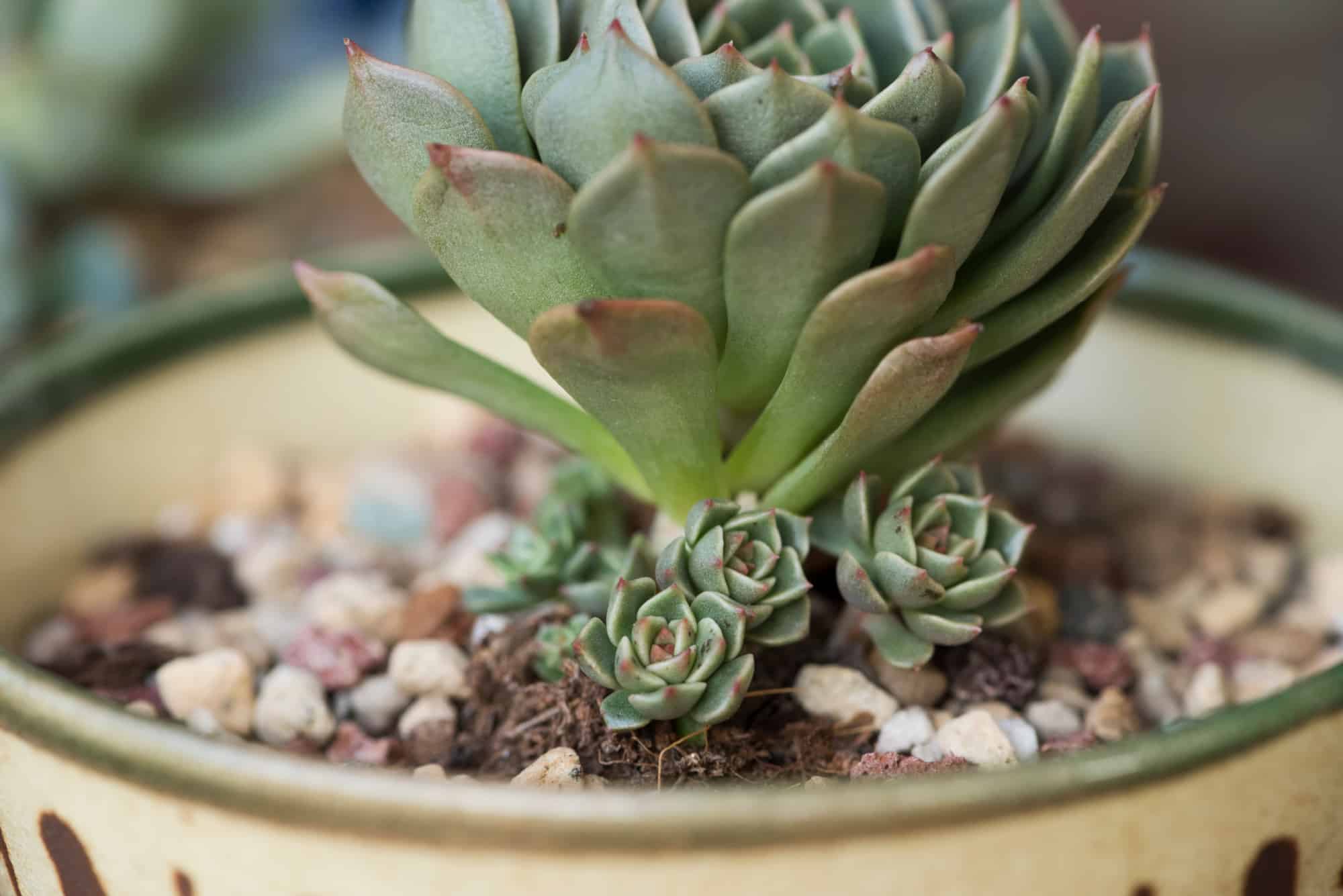Sempervivum succulents are better known as hen and chicks. They are rosette-forming mini succulents with fleshy leaves and an array of flower shades that spread by throwing out a perfectly formed mini version – hence the “chick”. There are many types of hen and chick succulents but some stand out from the crowd. We’ll take a look at the most popular a little later on.
What Are Hen and Chicks?
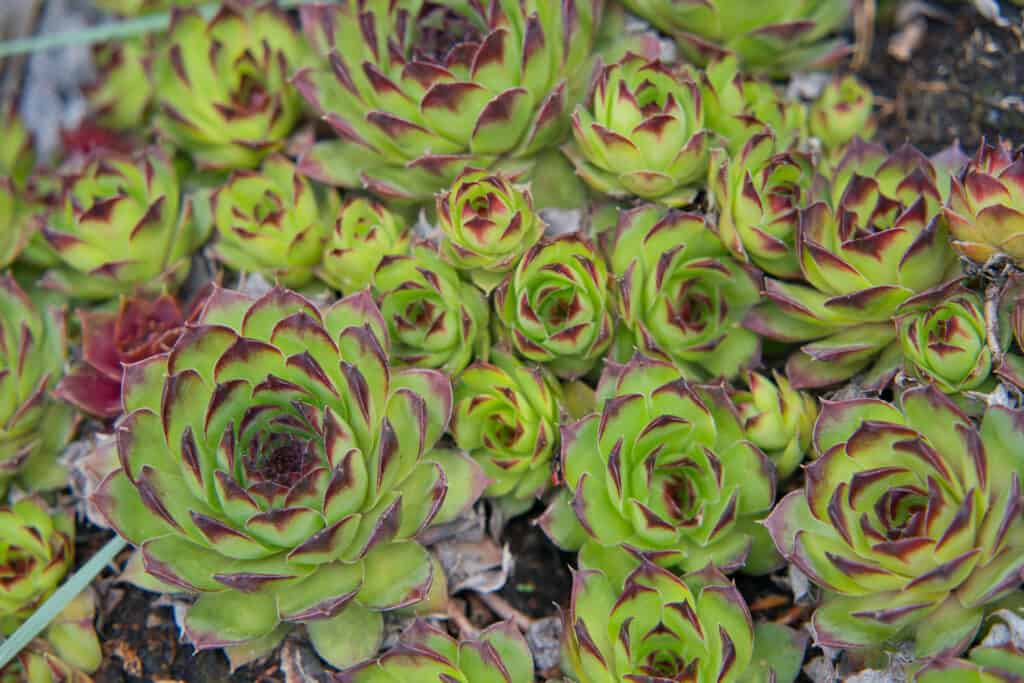
There are many types of hen and chick succulents but some stand out from the crowd.
©iStock.com/GettyTim82
Before we take a look at the different types of hen and chick succulents, what exactly are they?
They’re a type of succulent in the Crassulaceae plant family and they’re native to southern Europe and northern Africa. They get the name from their spreading habit. The main plant is the hen and her chicks form as buds on the main plant.
As they grow, they move away on thick short vines and put down roots nearby. This creates a mat over time with each plant shading the ground to prevent moisture loss.
There are several species referred to as hen and chicks that follow this reproductive pattern. They usually are ground-hugging species like sempervivums, but sometimes jovibarbas, echeverias, sedums, and bergenia succulents are called hen and chicks too. The term really applies to any succulent with the hen and chick growing habit.
In the southern United States, hen and chick succulents are called hen-widdies and they’re often referred to as houseleeks in the United Kingdom. Rumor has it they were used to plug holes in leaky roofs and they helped prevent housefires with their water content.
Succulents went out of fashion, but now they’re back with a bang, adorning social media pages and ‘shelfie’ shots of succulent collections. They are inexpensive, easy to grow, and take up little space- what’s not to love?
And What’s a Succulent?
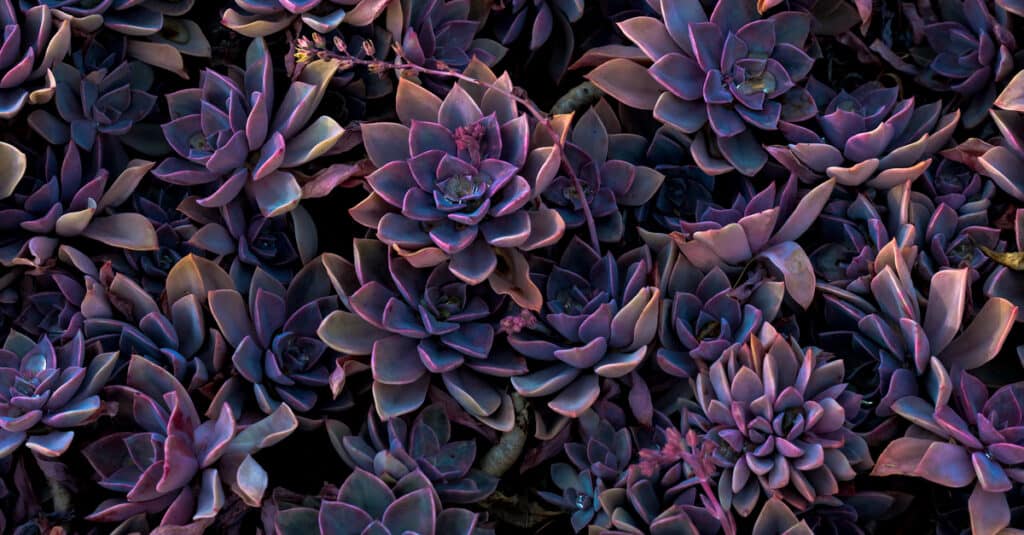
In the southern United States, hen and chick succulents are called hen-widdies and they’re often referred to as houseleeks in the United Kingdom.
©Harrison Cole Keithahn/Shutterstock.com
Succulents are water-storing plants with thick leaves that are drought-tolerant. They grow in every continent except Antarctica and are very popular houseplants due to their low water requirements.
The name is drawn from the Latin word sucus, which means juice. It’s also where we get the word sap from.
There are more than 25 plant families containing succulents. It’s not an actual botanical family, but a way of referring to plants with thick and fleshy moisture-storing foliage.
The Different Types of Hen and Chick Succulents
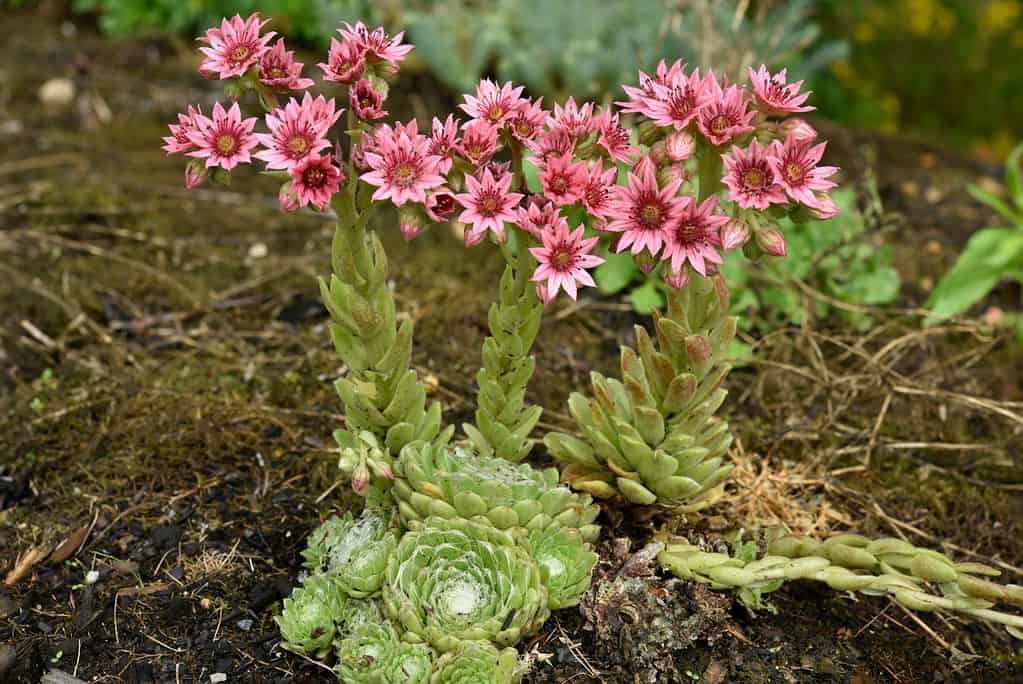
Over the course of a few years, hen and chick succulents create a mat of rosette succulents that flower, preserve the soil, and need barely any attention.
©COULANGES/Shutterstock.com
There are hundreds of different hen and chick types. Some are natives and others have been bred by botanists to achieve weird and wonderful colors or shapes.
Here are some of the most popular hen and chicks succulents:
- Sempervivum tectorum Sunset with burgundy-green foliage and pink flowers. It reaches up to three inches in height and six in width.
- Sempervivum archnoedium is three inches tall and four inches wide. It has pale green foliage with a spider-like fluff covering the center to retain moisture. It’s pink flowering and often called the Cobweb Houseleek. There are many different cultivars of this firm favorite.
- Sempervivum calcareum is a mid-green hen and chick with maroon leaf tips. It reaches six inches tall and four inches wide. This is another pink flowering succulent.
- Sempervivum Black reaches a maximum height of three inches and it has purple-black foliage with bright lime green splashes. Its flowers are yellow. A great choice for gothic feel gardens.
- Sempervivum Royanum has fresh apple green leaves with pinky tips. It’s a stand-out hen and chicks that glows in the sunlight. It has pink flowers and reaches up to six inches tall.
- Sempervivum Saturn is a large hen and chicks with a supersized hen! Her leaves are grey-green and she broods numerous chicks. This one is a quick spreader that reaches up to eight inches in height and width.
- Sempervivum Oddity is a hen and chicks with tubular leaves. Oddity is odd indeed! It has rolled tube-shaped leaves of green and purple. This one has pink summertime flowers and its shape makes it perfect for kids.
Do Hen and Chick Plants Spread?
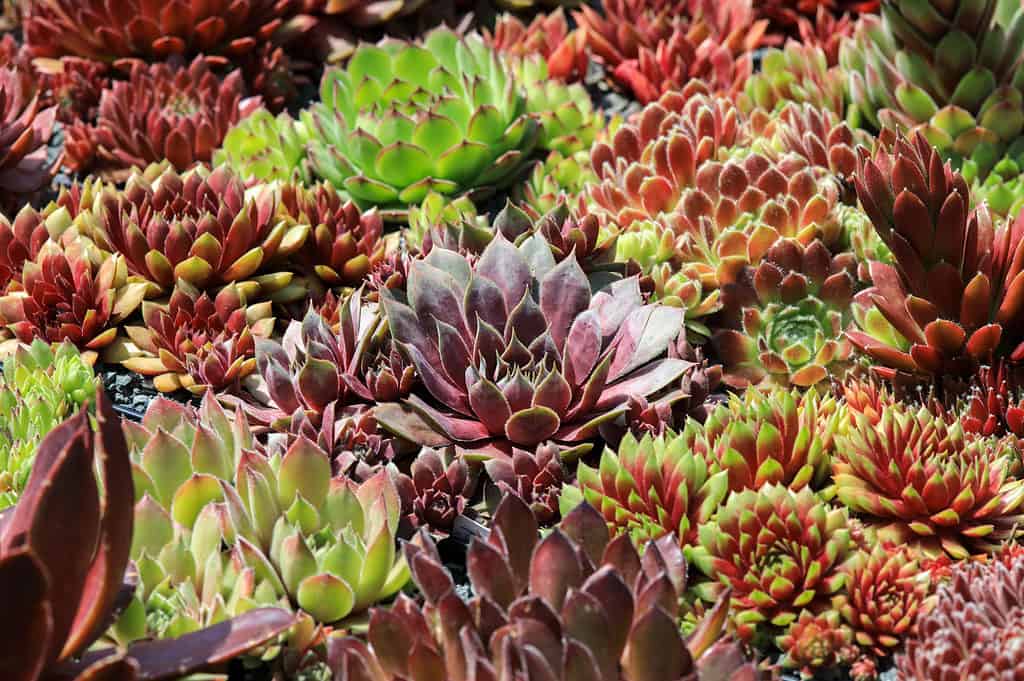
Hen and chicks succulents grow happily directly in the ground or in a container.
©MaCross-Photography/Shutterstock.com
Yes, hen and chicks succulents spread.
The mother hen throws out whole new plants (chicks) on stems to root independently into the ground. Over the course of a few years, this creates a mat of rosette succulents that flower, preserve the soil, and need barely any attention.
How To Look After Hen and Chick Succulents
Hen and chicks succulents grow happily directly in the ground, or in a container, so long as they have well-drained gritty soil and there’s lots of sunlight hitting their foliage.
Gritty soil ensures excess water is drained away quickly, and it stops mud from splashing on its foliage. Although hen and chicks are tough, they can’t cope with excess wetness.
It’s very easy to start up a new patch. Simply snip the “umbilical cord” holding the chick to the mother and plant it in a new spot. This works best if it already has a few roots.
Pruning isn’t really necessary, but you can remove damaged or yellowing leaves as they occur. In winter, removing fallen tree leaves from their foliage helps keep them dry and prevents rot.
When Do Sempervivum Succulents Flower?
Sempervivum succulents flower in spring and summer when the weather is warmer. Their blooms are usually pink with yellow eyes and they sit on top of tall, thick stems. They look rather out of this world, so children love them!
Are Hen and Chicks Poisonous to Dogs?

Sempervivum succulent plants produce small babies.
©Christina Siow/Shutterstock.com
No, hen and chicks are safe plants around dogs, cats, and horses. The ASPCA says they are non-toxic, but that doesn’t mean dogs should eat them. Any plant eaten in large amounts can cause a gastric upset.
Are Hen and Chicks Succulents Good Houseplants?
Hen and chicks are excellent houseplants given the right care, and luckily, succulent care is pretty simple!
Make sure your succulent is in a pot of gritty compost. Grit is needed to make sure excess water drains away effectively. Soggy roots will kill any type of succulent. Use cactus compost and add extra perlite if it feels heavy.
Overwatering is the main reason succulent houseplants die. It may seem that a little drink each day is best, but this is totally incorrect! Succulents need to dry out before they are watered. They store plenty of liquid in their thick, fleshy leaves and only need a drink when the soil has dried out on top.
Pop your succulent in a sink of water to soak up what it needs for a few hours. Then, let it drain on the sideboard for another few hours before replacing it.
Use fertilizer very sparingly and only in the growing months.
And finally, succulents need at least six hours of indirect sunlight each day to thrive. A bright windowsill is best, but if direct sunshine falls on the leaves it can burn them over time.
Hen and Chicks Succulent Troubleshooting

There are so many types of hen and chicks it’s impossible to say which is best, but you can pick out the types you prefer for really stunning effects.
©iStock.com/mdragan
Wondering what might be wrong with your hen and chicks succulent? Here are some quick tips to help you troubleshoot!
- Yellow leaves = too much water or fertilizer. Let it dry out.
- Mushy leaves = game over. It may be too late to save your succulent.
- Tall, thin, and leaning to one side = not enough sunlight. Move it to a brighter spot.
- Brown patches = sunburn. Move it out of direct light.
- Wrinkled, dry skin = underwatering. Let it soak for a few hours.
Hen and Chicks Succulents Types: Which is Best?
There are so many types of hen and chicks it’s impossible to say which is best, but you can pick out the types you prefer for really stunning effects. Burgundy leaves, green leaves, tubular shapes, and alien flowers combine to make this range of plants truly spectacular and worth every penny.
Up Next
Thank you for reading! Have some feedback for us? Contact the AZ Animals editorial team.

